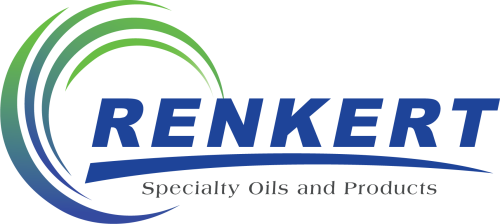Many industries are interested in products that not only perform but are environmentally friendly as well. This is what makes Shell isoparaffins an excellent choice for solvents and oils.
But despite having in common characteristics that make them more desirable than naphthenics and other more aromatic compounds, and even more stable than normal paraffins, not all isoparaffins are created equal.
Why Isoparaffins are Sought After
Among base oils, the benefits of isoparaffins are perhaps best understood by first comparing paraffins in general with naphthenic oils, then distinguishing between the characteristics of isoparaffins and normal paraffins (n-paraffins).
Paraffins vs. Naphthenics
Compared with the ringed carbon chain molecular structure of naphthenics, the straight-chain structure of paraffins provide many benefits.
The paraffinic structure is characterized by:
- Lower volatility (less evaporation, stable)
- Low odor and low reactivity (inert)
- Low viscosity for superior wetting
- Higher viscosity index (less change in viscosity as temperatures change)
- High pour points (in n-paraffins) – longer carbon chains are used for candle wax.
In contrast, naphthenics have a very low viscosity index (viscosity changes rapidly with temperature changes). Low pour point and more solvency can be desirable, but the characteristic oily smell and higher reactivity detracts from consistency in end product quality for many applications.
Isoparaffins vs. N-paraffins
Because of the carbon branching achieved through the isomerization process, the resulting isoparaffins can improve on the quality of n-paraffins for certain desired outcomes.
The isoparaffinic structure is characterized by:
- Lowest volatility
- Little to no odor
- Inert with little reactivity
- Water-white clarity
- Lower pour point
This is why Shell GTL (gas-to-liquid) isoparaffins are so sought-after in synthetic oils, carrier oils, food-grade/medical-grade oils and other key product categories:
- Cosmetics – GTL isoparaffins make an excellent white oil that is soft and silky to the touch for creams and emollients.
- Cleaning and Aerosols – Inert and consistent, water white isoparaffins perform.
- Agricultural products – Low viscosity is best for superior surface area wetting, an ideal characteristic in carrier fluids such as pesticides and dust suppressants.
- Lamp Oils – GTL isoparaffins’ purity burns fully and cleanly with no soot.
- Rolling Oils – Pure GTL isoparaffins are used for aluminum beverage can processing.
- Defoamers – GTL performs better with much lower foaming.
However, isomerization increases the stability of paraffins, which can be an unwanted side effect. Highly branched isoparaffins lose an important environmental benefit of n-paraffins: high biodegradability.
But Shell GTL products are different.
Environmental Benefits of Gas-to-Liquid (GTL)
The ideal base oils for products that tout eco-friendly sourcing offer the benefits of isoparaffins while maintaining green product properties.
This is what makes Shell GTL stand out among other isoparaffins on the market.
Readily Biodegradable
Highly-branched isoparaffins may offer the benefits of clarity, stability, a lower pour point, etc., but they do not break down in the environment as well as n-paraffins.
With their straight-chain structure, n-paraffins are considered “readily biodegradable,” meaning at least 60 percent of molecules break down within 28 days. When highly refined and highly isomerized, isoparaffins lose this designation.
This is an important distinction between the GTL (gas-to-liquid) isoparaffins produced by Shell.
Derived from natural gas, Shell’s GTL process produces lightly isomerized solvents and fluids. Shell GTL products find a sweet spot with all the benefits of isoparaffinic structure (lower volatility and pour point) with lower viscosity and the readily biodegradability of n-paraffins.
Low Ecotoxicity
These synthetic isoparaffins are derived from natural gas rather than petroleum, so the production process for Shell GTL isoparaffins begins and ends with little to no impurities.
Containing only carbon and hydrogen, natural gas (methane) is a remarkably clean feedstock. By contrast, petroleum also contains sulfur, nitrogen and oxygen, which either must be refined out (becoming byproducts) or remain as contaminants in end products.
This is an economic concern as well. Refining undesirable compounds out of petroleum (and disposing of them conscientiously) at a typical petroleum refinery adds cost which must be passed on to you, the buyer.
Low Ozone Formation Potential
One of the most marketable characteristics of GTL isoparaffins to green consumers is their low photoreactivity. Thanks to its clean feedstock, GTL fluid products are highly unlikely to combine with oxygen in the atmosphere, which reacts with sunlight to create ozone and smog.
Certain consumer products have a more direct tie-in to this benefit than others, such as liquid candles, lighter fluids and indoor lamp oils, which burn these isoparaffin fuels cleanly. Thus, GTL isoparaffins are relevant to consumers who choose products based on conscientious product sourcing.
Why Shell GTL Isoparaffins Are the Best In the World
Renkert Oil is proud to offer Shell GTL solvents and fluids because they give our customers the best possible formulation for a wide variety of applications. GTL products offer the benefits of isoparaffins without losing the environmentally-friendly characteristics of n-paraffins.
It offers the highest quality among isoparaffins:
- Purest – Fluids are colorless, odorless, tasteless.
- Safest – Products are non-toxic to humans and other organisms.
- Silkiest – GTL Isoparaffin white oils are silky, not oily to the touch.
- Easy to use – Isoparaffins have high flash points and low pour points.
- Unique – Process oils are lower foaming with a consistently low evaporation rate.
And Shell GTL products are engineered with an environmentally friendly process:
- Readily biodegradable (lightly-isomerized)
- Low ecotoxicity (pure natural gas sources)
- Low potential of ozone formation
- Natural gas feedstock
Ask us about the performance and eco-friendly qualities of Shell GTL products and much more. Let Renkert Oil be your experienced provider of specialty oils, consultants who understand your unique application needs and logistics experts eager to partner with you.

